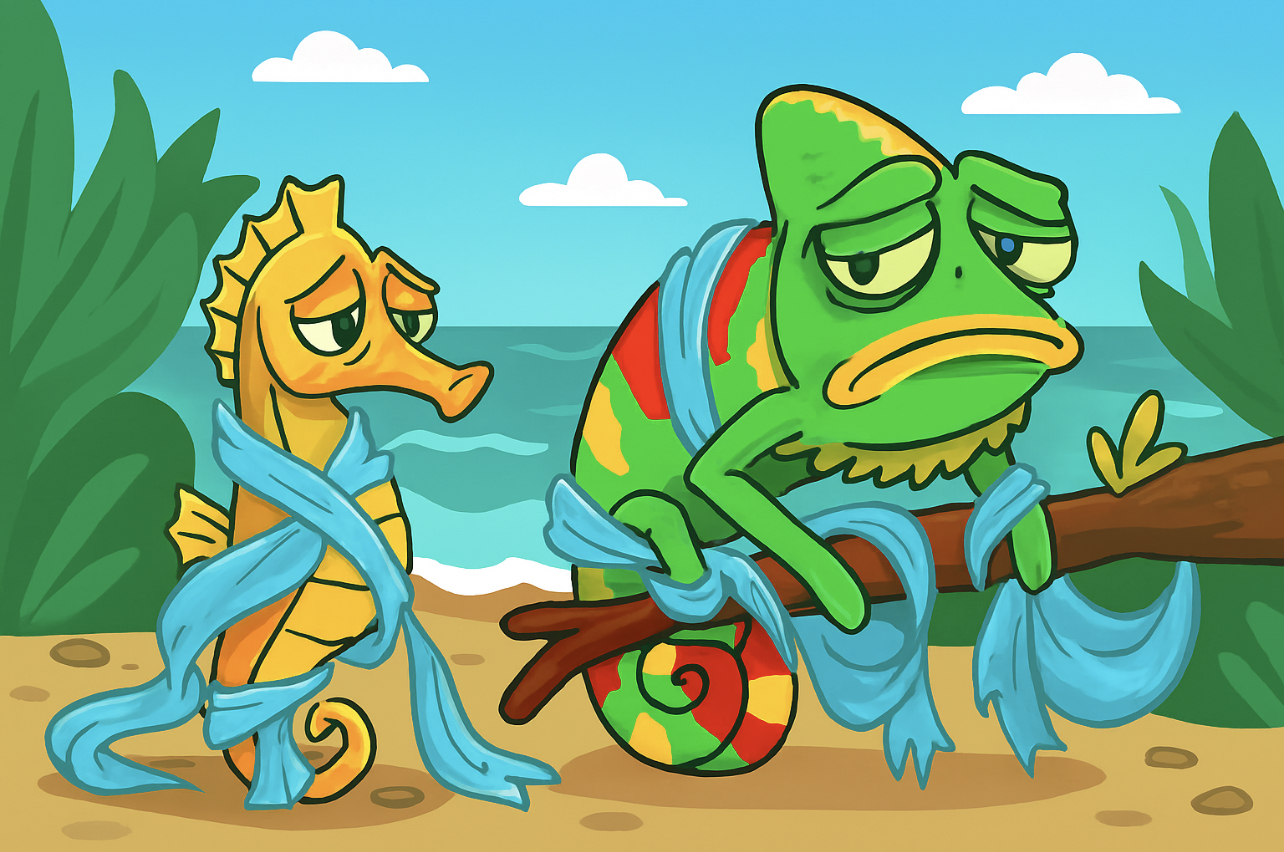Myth 27: “Plastic Plants Are a Good Alternative for Chameleons”

FALSE. This is not just misleading — it's toxic, unethical, and potentially deadly.
Why Plastic Plants Are a Silent Threat
Plastic plants may look harmless, but they introduce cumulative, invisible harm to chameleons — especially babies, whose immune systems and organs are still developing. Here's how:
1. Microplastic Contamination
UV lights and heat lamps degrade plastic over time, releasing microplastics and toxic fumes into the air.
These particles settle on leaves, water droplets, and feeders — and are inhaled or ingested by chameleons.
The damage is not immediate, which makes it even more insidious. It builds up silently, affecting organs, digestion, and neurological health.
2. Toxic Off-Gassing
Plastics emit volatile organic compounds (VOCs) when heated.
In poorly ventilated enclosures, these fumes accumulate, creating a toxic atmosphere that harms both reptiles and humans.
4. Chocking and Impaction Hazard
Chameleons can ingest the indigestible fake plants.
Plastic plants impact the intestines and the chameleon will die in pain without showing an obvious reason.
5. Eyes in Danger
Fake vines have sharp edges or lose particles that get easily off.
When a chameleon ribs its eyes on this material, eyes inflammation, debris penetrating the conjunctive sac cause inflammation and led in hundreds of chameleons to losing eyesight..
6. Unnatural Texture and Behavior Disruptio
Chameleons rely on natural textures for climbing, gripping, and camouflage.
Plastic plants offer no moisture retention, no scent, and no biological cues, disrupting their behavior and causing stress.
Especially Dangerous for Baby Chameleons
Babies are hyper-sensitive to environmental toxins.
Exposure to microplastics during early development can lead to:
Organ failure
Growth deformities
Neurological damage
Premature death
Some unethical breeders exploit this — knowing that delayed symptoms mean they won't be blamed when a baby dies months later. They simply replace the animal and sell another. It's a cycle of greed and cruelty.
Real Science, Real Consequences
Microplastics are now found in tap water, bottled water, air, and insects — all of which chameleons consume.
Plastic hydration systems, feeders, vines, and backdrops compound exposure in captivity.
Studies show that UV exposure accelerates plastic breakdown, increasing microplastic release.
What to Use Instead
Live plants: Provide humidity, oxygen, and natural surfaces
Glass or ceramic containers: Eliminate leaching
Silicone hydration systems: Safe and inert
Natural branches and vines: Encourage healthy climbing and behavior
Final Word
Plastic plants are good for plastic chameleons only. For real, living beings — especially delicate babies — they are a slow-acting poison disguised as convenience.
If someone recommends plastic plants, they either:
Don't know what they're doing, so the ignorance is the killer or worse —
Know exactly what they're doing, and are choosing profit over life.
Let's call it what it is: ugly, greedy, and dangerous.
Protect your chameleons. Reject plastic. Choose life.
Plastic plants are good for plastic chameleons.